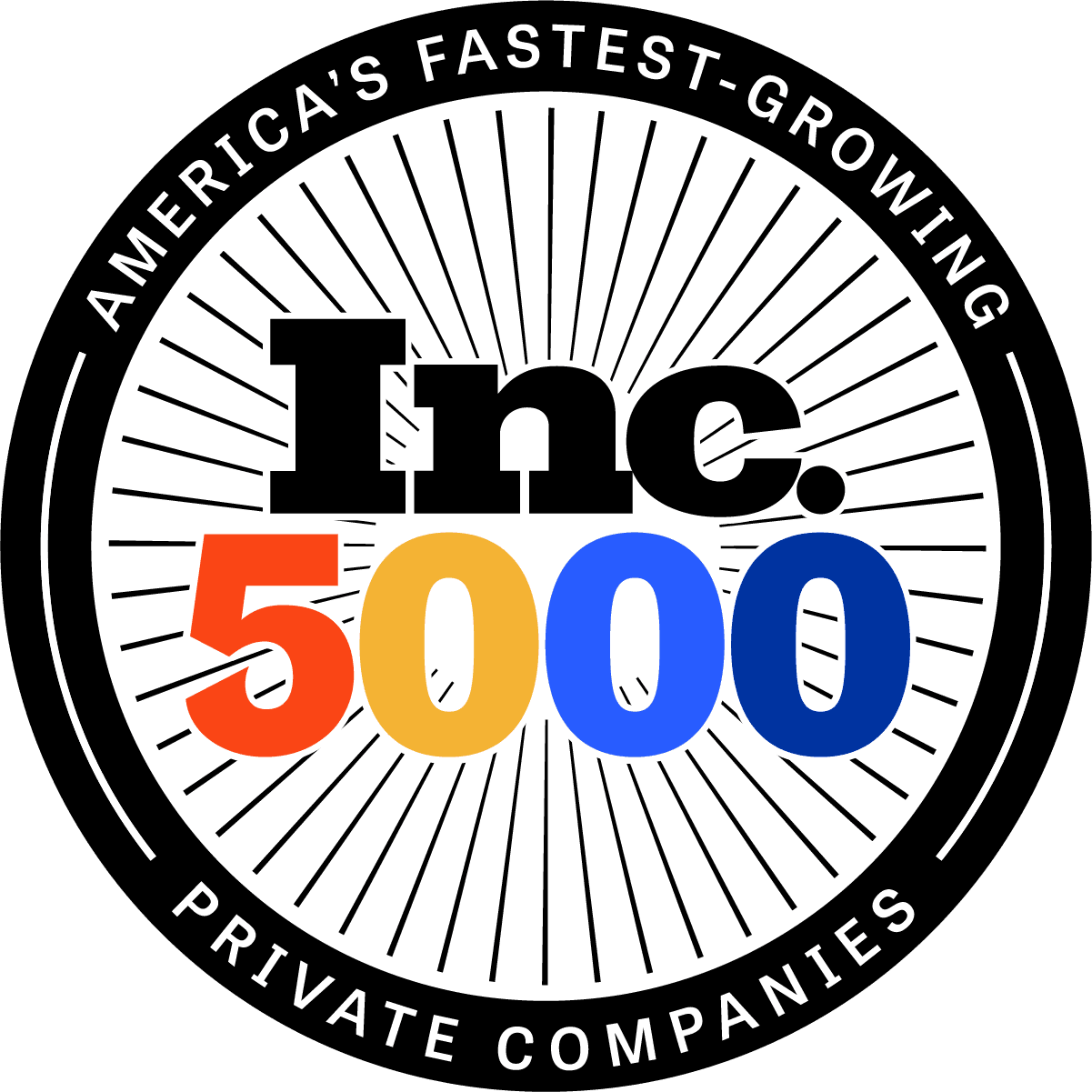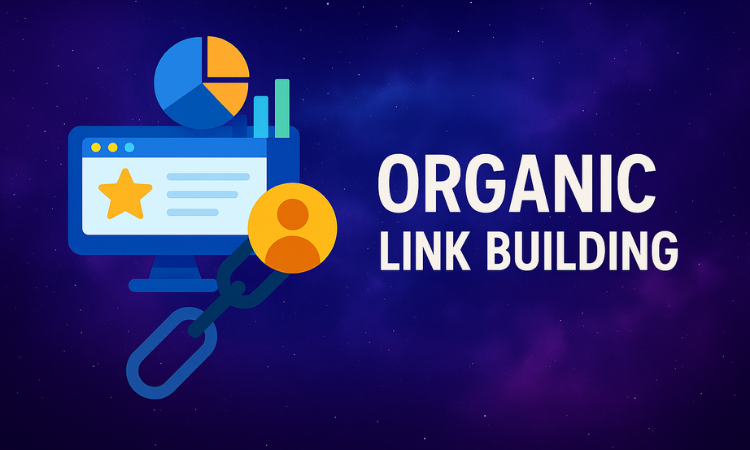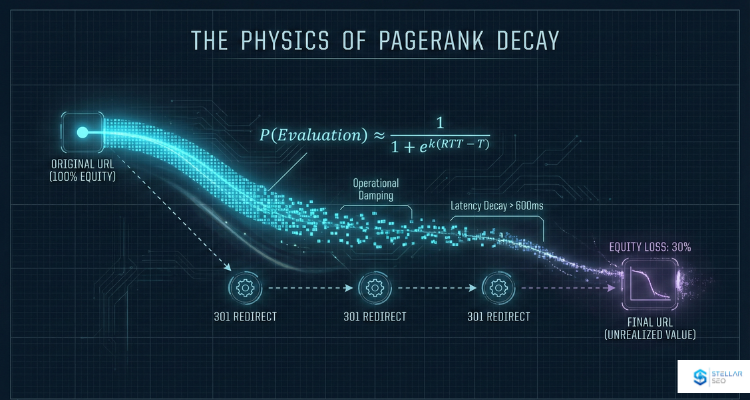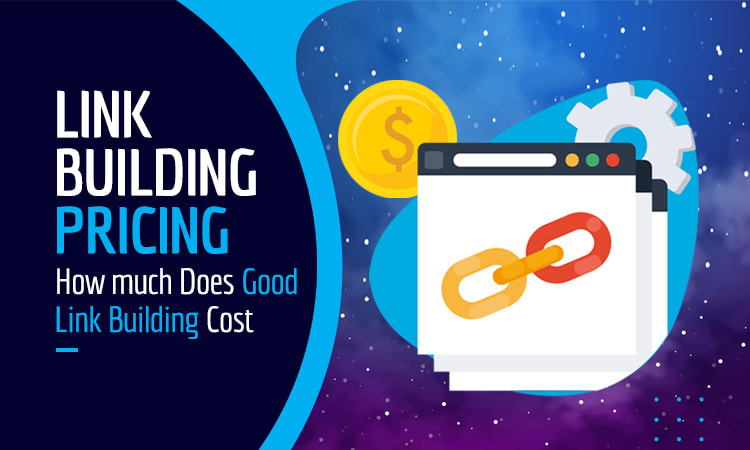How To Earn Natural Backlinks
Organic links are the difference between ranking occasionally and ranking consistently. They are the signals Google and AI systems rely on to determine which brands are credible, not just present.
At Stellar SEO, we have earned more than 25,000 high-quality backlinks across highly competitive industries. Our link building team focuses on securing editorial placements and brand mentions that reinforce topical authority and strengthen your presence in both search results and AI summaries.
Before you invest time or budget into link building, it helps to get clear on a few foundational questions:
- What does an organic link look like?
A contextual citation is placed because your content helps the reader, not because it was purchased or traded. - What is organic link building?
Earning citations by publishing content worth referencing and putting it in front of people who write, publish, and cite. - How do you build organic links consistently?
Create content that solves real problems and support it with targeted outreach that offers value first. - How has this changed with AI and entity-based search?
Search engines and AI evaluate whether your brand is consistently mentioned alongside the topics you want to rank for. These relationships shape your visibility.
Any agency can increase your backlink count. Very few can influence how your brand is interpreted, categorized, and recognized. The sections that follow explain how to do that.
A Real Example of This Approach in Action
A personal injury law firm in a major metro market wanted to rank for the highly competitive term truck accident lawyer. Instead of chasing general backlinks or producing more generic practice area content, we built a niche, entity-aligned website focused specifically on commercial vehicle and trucking injury claims.
We reinforced the brand’s positioning through:
• Topically relevant supporting pages, such as FMCSA regulations, driver fatigue, underride collisions, black box evidence, and trucking insurance requirements
• Consistent off-site messaging across attorney profiles, legal directories, and citation sources
• Editorial links and citations from transportation safety organizations, legal publications, and regional news outlets covering roadway incidents
Within four months, the firm moved from not ranking to appearing on the first page. This worked because search engines could clearly understand what the brand was the authority on.
Authority came from clarity and reinforcement, not link volume.
What Makes an Organic Link Different?
An organic link is earned because your content is genuinely useful. It happens when another website owner chooses to reference your page to support, explain, or enhance what they’re already saying. These natural links usually come from relevance, helpful information, and strong alignment with search intent. When this happens consistently, your backlink profile strengthens in a way that supports long-term rankings and site authority.
A simple example:
A running coach publishes an evidence-based stretching article for a recovery guide, clarifying the protocol and citing sources the coach lacks. They link to your page because it improves their post for readers: no pitch, no transaction, just relevance.
That is an organic link.
Paid links, sponsored placements, guest posts, and other link building strategies also serve a useful purpose when done strategically and transparently. The key distinction is intent. Organic link acquisition signals that others recognize your content as authoritative without prompting.
When your content attracts links from high authority websites, research institutions, news outlets, and trusted niche publishers, the link equity passed to your site is more influential. These quality links make your website more credible to both users and search engines, helping you earn stronger visibility across competitive keywords.
Why Organic Links Matter More Today
Organic links don’t just help with rankings. They signal that your brand is known, referenced, and relevant in your space. When another website links to you naturally, it means one of two things is true:
- People are already aware of your brand, or
- Your content is ranking well enough to be discovered and referenced.
Both are strong indicators of a real business with real authority.
Search engines and AI systems pay close attention to these patterns. It’s not only the number of referring domains that matters, but the context in which your brand appears.
When your name shows up repeatedly in relevant articles, blog posts, interviews, resource lists, and even unlinked brand mentions, your entity becomes easier for algorithms to recognize and trust.
When that recognition strengthens, the benefits compound:
- Higher search engine results stability
- Stronger visibility in AI-generated summaries
- Better alignment with your target audience
- More referral traffic and brand credibility
Organic links age well, support authority, and contribute to a credible online presence. They help build a profile that is durable and tied to real-world reputation, not quick-win tactics.
The key is knowing the difference between a link that shifts authority and a link that simply adds to your total.
What a High-Value Organic Link Actually Looks Like
A high-value organic link appears in a context where it genuinely helps the reader. It is placed naturally inside relevant content, surrounded by related topics, and aligned with the intent of the page. The link placement feels useful, not forced.
A strong organic link usually includes three core attributes:
1. Topical relevance
The linking site and the surrounding content match the subject you cover. Relevance is the single strongest ingredient in link value.
2. Editorial selection
An editor, content creator, or publisher chose to reference your content because it added meaning or clarity. This is what separates earned links from placements that are simply inserted.
3. Audience fit
The link appears in a place where your ideal audience is already reading, researching, or exploring. This drives both rankings and referral traffic with real intent.
Example for clarity:
If a sports medicine clinic publishes a guide to ACL recovery and cites your physio-based mobility article, the link supports authority, relevance, and value. The placement makes sense to both search engines and human readers.
Compare that to a link placed on a general lifestyle blog with no subject connection. Even if the link is followed, the relevance and trust signals are far weaker.
Why Organic Links Change How Your Brand Is Perceived
Trust is socially reinforced. When people see your brand referenced by other credible websites, publications, or professionals, they assume you are respected and reliable. When your brand is rarely mentioned, they assume you are less established.
Organic link building and brand mentions work together to strengthen how your business is perceived. When respected publishers and subject matter experts reference your work, it signals to your market that you are a recognized authority. This shapes how potential customers, partners, and industry peers view your expertise.
This recognition creates real business outcomes:
- Prospects feel more confident choosing you
- Sales cycles shorten because trust is already established
- Referral traffic increases from audiences who already respect the source
- Your brand becomes consistently associated with the topics you want to own
If your company sells expertise, authority is part of the product. Organic links and brand mentions build that authority in a way that is visible, repeatable, and scalable.
A Better Framework for Earning Organic Links
Organic link building is not a matter of hope. Links happen when your content is discoverable, distinct, and useful enough that other websites want to reference it. To earn natural links at scale, you need both linkable content and intentional visibility.
The Authority Content System (How to Create Linkable Assets)
Our Authority Content System focuses on creating resources that make others work better. When your page improves another article, guide, or explanation, linking to you becomes the logical choice.
Formats that consistently attract organic backlinks include:
- Original research and data insights
- Comparison guides and structured evaluations
- Step-by-step breakdowns of complex processes
- Checklists, templates, and reference materials
- Visual explainers and annotated diagrams
These formats earn links because they are easier to reference than recreate. This is why good SEO content writing prioritizes clarity, structure, and unique insight rather than simply rephrasing what already exists.
Why Some Pages Earn Links and Most Do Not
Pages earn organic backlinks when two conditions are met:
- The page is discoverable.
It ranks for keywords that content creators search while researching. - The page is meaningfully better than alternatives.
It provides clarity, examples, data, or structure that makes someone else’s explanation easier to understand.
Most content doesn’t earn links because it is either invisible (no rankings) or interchangeable (nothing new or valuable to reference).
Organic link building works when your page becomes the page people cite to explain something better.
The Three Reliable Ways to Earn Organic Links
1. Content That Ranks and Gets Referenced
Some pages attract links simply because they show up when writers research a topic. Examples:
- Industry statistics
- Step-by-step tutorials
- Definitions and conceptual explainers
- Original studies and survey data
Curated Best-Of Lists
Publish strict inclusion criteria, cite your methodology, and interview each inclusion. This earns natural citations from featured brands, newsletters, and local press without diluting credibility.
Free Tool, Real ROI
Ship one ungated calculator or checklist aligned to a high-value topic. Add “short “on how we calculated this reference box and copy-paste stats. This raises citation rates from journalists and analysts.
Once these pages rank, they earn links on autopilot because they are part of the research workflow.
2. Content Promotion to Existing and Adjacent Audiences
Visibility drives citations. When your content is actively shared, discussed, or referenced, it becomes linkable.
- Email newsletters
- Social media distribution
- Podcast appearances
- Speaking events
- Industry communities
If people see it, people cite it.
Value-Based Outreach: Broken Links and Unlinked Brand Mentions
Not all link earning requires content promotion or ranking first. Some of the most efficient organic links come from improving pages that already exist.
Broken link building works because you are helping another site fix a problem. When a resource they reference no longer exists, you offer your page as a relevant replacement. This improves their content and earns you a natural link.
Unlinked brand mentions are similar. When your brand is mentioned but not linked, requesting attribution turns recognition into measurable authority. These links are natural because the publisher was already referencing you.
Both tactics work because they are value-first:
- The site owner benefits (better content, fewer errors).
- The link is contextually appropriate.
- The link aligns with how real citations happen online.
This is one of the fastest ways to reinforce brand authority and entity signals without needing to produce brand-new assets immediately.
The Role of AI, Entities, and Brand Context
Search engines and AI systems evaluate more than backlinks. They analyze patterns across the web to understand who you are, what you do, and how credible you are within your industry.
Google’s AI Overviews, Bing Copilot, and Perplexity determine subject-matter authority using co-occurrence. They look at how often your brand appears alongside relevant keywords, topics, and trusted organizations.
This means earning links alone is no longer enough. You need to show up consistently in the right company. When your brand is mentioned in authoritative articles, industry roundups, interview features, and resource guides, AI systems learn to associate your brand with the expertise you want to be known for.
This is where our approach differs. We earn high-quality backlinks that also strengthen your entity profile. Every placement reinforces what your business is known for and connects you with relevant topics and industry signals. This improves visibility in both traditional search and AI-generated results, creating recognition that compounds over time.
Quick Action Step to See This in Real Time. Go to Google and “search:
“Your Brand Name” -yourdomain.com
This shows what others are saying about you online. Look for patterns such as:
- Which topics are your brand associated with
- Which industry sites are referencing you
- How frequently your brand appears in relevant discussions
- Whether those mentions reinforce what you want to be known for
If the associations align with your positioning, you are sending the right signals. If not, you have an entity alignment gap. Link building that reinforces consistent brand context is the fastest way to correct that.
What High Quality Backlinks Signal Today
A high-quality backlink is not just a link from a strong site. It is a signal that your brand is trusted in a specific context.
Search engines and AI systems look for:
- A reputable, relevant website linking to you
- Content that discusses the same topic or expertise you want to rank for
- Natural anchor text that reflects how real people reference your brand
- Consistent co-occurrence between your brand and the entities, topics, and keywords you want to own
Two links can have the same Domain Rating and anchor text, yet one will move rankings and the other will do nothing. The difference is whether the link reinforces your entity identity.
Example
A backlink from a general lifestyle blog might pass some link equity.
But a backlink from a respected industry publication discussing your exact service teaches search engines and AI models what you are known for.
That second link builds:
- Topical authority
- Brand recognition
- Eligibility for AI-generated summaries and “best of” evaluations
This is the standard we optimize for. Not just acquiring links, but acquiring the right links that reinforce who you are in the market.
Case Study: Increasing Organic Traffic With Consistent Link Building
A mid-market SaaS brand struggled with stagnant rankings and minimal referral traffic. We audited their backlink profile, identified missing entity associations, and created high-quality content resources. We earned placements from industry blogs, professional associations, and relevant publications. In six months, they gained new links from 38 referring domains and increased organic search visibility by 41%.
Paid Links vs. Organic Links: The Real Differences in Cost, Control, and ROI
Both paid and organic link building have value. They simply deliver results on different timelines and with different levels of control.
Paid link placements allow you to move quickly. You can choose the sites, anchors, and timing. This makes budgeting predictable and results more direct. You are buying speed, clarity, and placement control. The trade-off is that paid links are a recurring investment. They deliver immediate authority gains, but the cost remains tied to volume.
Organic links earn authority over a longer timeline. They are driven by reputation, content quality, and brand relevance. When you earn a link naturally, it often lasts for years without ongoing costs. The challenge is predictability. You cannot fully control who links, when they link, or how quickly momentum builds.
How the two approaches compare in real campaigns:
| Factor | Paid Link Building | Organic Link Building |
|---|---|---|
| Speed of impact | Fast. Links can be acquired consistently month to month. | Slower. Growth compounds over time. |
| Control over placement | High. You choose the website, placement, anchor, and context. | Low to medium. You influence, not control. |
| Predictability | Strong. Budget maps directly to link volume. | Variable. Influenced by content resonance and market adoption. |
| Cost model | Recurring expense tied to the number of new placements. | Cost decreases over time as links naturally accumulate. |
| ROI timeline | Short-term gains are measurable and direct. | Long-term ROI grows as authority compounds. |
| Brand impact | Helps establish authority quickly. | Reinforces credibility and trust over time. |
This is why the most effective link building strategies do not choose one or the other.
Paid links help you accelerate ranking growth, close authority gaps, and establish a competitive baseline. Organic link earning amplifies brand identity, reinforces expertise, and improves your long-term authority footprint.
When managed together, paid links provide momentum and earned links provide durability. That combination produces stronger rankings, stronger brand perception, and more efficient acquisition over time.
There are multiple ways to earn organic links, and each has different strategic applications.
Scaling the Link Building Process
Scaling requires systems. Track outreach patterns, maintain contact lists, and prioritize domains and link opportunities based on authority and relevance. Each competitor’s domain backlinks to identify high-authority websites linking to similar content. The goal is not how many backlinks you acquire but how consistently you earn powerful backlinks that match your core topics.
- Prioritize domains by topical fit, traffic health, and editor responsiveness.
- Maintain briefs, outreach angles, and contact history per vertical
- Systematize approvals and QA for accuracy and claims
- Reinvest into formats that attract the most referring domains per word
Goal: fewer, better links that reinforce your entity identity and move core pages.
Measuring Impact Without Guesswork
Track both authority and outcomes:
- Referring domains, link velocity, and anchor distribution
- Entity and brand co-occurrence across trusted publishers
- Impressions, clicks, and assisted conversions on linked pages
- Inclusion in AI summaries for target topics
Cadence: weekly QA on new links, monthly KPI rollup, quarterly strategy reset against competitor movement.
How to Start Building Links the Right Way
Effective link building starts with understanding what it takes to outrank your competitors, not just adding links at random.
How We Make Link Building Measurable
Before we build links, we evaluate page-level authority, not domain-level authority.
We analyze:
- Referring domains to competing pages
- Anchor text patterns signaling topical relevance
- The entities and concepts competitors are consistently associated with
- Whether those pages appear in AI summaries in addition to search results
This shows exactly what authority gap must be closed to win a specific ranking.
No guesswork. No arbitrary link targets. Only what moves outcomes.
From there, we build a link strategy that maps to ROI, not just link quantity. Some pages need more links, better topical alignment, and improved anchor distribution to reinforce relevance. This framework enables precise planning and prevents wasted investment.
If your goal is growth, the question is not “How many backlinks do I need?” The correct question is:
What level of authority and topic association is required to win this specific ranking, in this particular market, against these specific competitors?
That is what our process reveals.
For a deeper explanation of how to evaluate link ROI and link investment pacing based on competition, we break it down in our Search Engine Land article (link here once live).
Once the competitive plan is defined, we execute link acquisition in a way that:
- Reinforces the topics and entities you want to be known for
- Strengthens your identity signals for AI and search engines
- Builds authority on the exact pages that influence conversions
- Compounds over time, rather than needing constant replacement
This is how link building shifts from “activities” to brand authority development that drives measurable financial outcomes.
Book a Strategy Call
If you want link building that drives rankings, reinforces brand identity, and strengthens authority across search and AI, we should talk.
We will map your page-level authority gaps, quantify what it will take to win, and outline a plan that compounds over time.
Build a brand that is recognized, referenced, and trusted. Book your strategy call today.
Frequently Asked Questions About Organic Link Building
What is an organic link, and how do natural links work?
An organic link is a natural link earned because your content is useful. It is added voluntarily by publishers who reference your work to help explain or support their own content. These citations strengthen your backlink profile by signaling relevance and trust.
What is natural link building, and how is it different from paid link building?
Organic link building focuses on earning links by publishing high quality content that is worth citing. Paid link building offers placement control and speed, but requires ongoing budget. Organic link building compounds authority over time because the links reinforce your credibility and topic alignment.
How do natural backlinks improve rankings and AI visibility?
Natural link building contributes to higher rankings because search engines and AI systems interpret organic citations as trust signals. These patterns influence how your brand appears in the Knowledge Graph, AI summaries, and top search positions for your target topics.
What does a high quality link look like in a backlink profile?
A high quality link appears within relevant content, on a reputable site, and is selected editorially. It fits naturally within the context of the sentence and contributes to topic clarity. Links placed in this way reinforce your authority and strengthen your ranking signals.
How does broken link building earn natural links?
Broken link building works by replacing outdated or dead external links on other sites with your relevant content. You improve the publisher’s page quality while earning a natural link that fits contextually. This is value-first link building and scales efficiently.
What types of content consistently attract organic backlinks?
Content that clarifies, structures, or simplifies complex information earns the most natural links. High-quality content formats that attract citations include data studies, comparison guides, process explanations, templates, and visual frameworks. These make other publishers’ content better.
How do link building strategies support topical authority and entity recognition?
Search engines use co-occurrence patterns, co-citation, and topic clusters to understand what your brand represents. Building links that reinforce the subjects your brand wants to rank for strengthens your identity in both search and AI-driven results.
How do you create content ideas that earn links consistently?
Effective content ideas start with understanding what your audience researches and what publishers cite. Focus on problems, decision points, proof, and comparison. Pages that are easier to reference than rewrite become long-term link earning assets.
How do I know how many backlinks are needed for higher rankings?
Backlink requirements depend on the authority of the pages already ranking. We analyze page-level referring domains, anchor text themes, semantic relevance, and competing entity associations. This reveals the authority gap required to win the result in your specific market.
Can building backlinks at scale be done without sacrificing quality?
Yes. Scaling building links requires a repeatable workflow, not mass outreach. The objective is earning fewer, better links that reinforce your core topics. Consistency in relevance and editorial judgment produces long-term ranking stability and brand authority.













